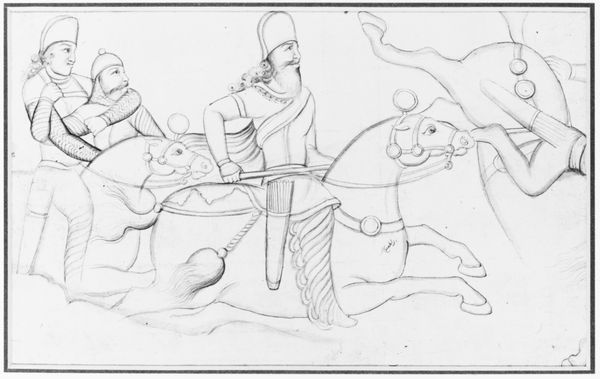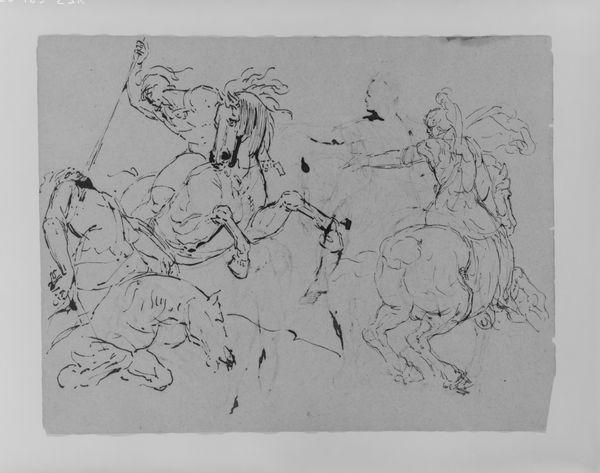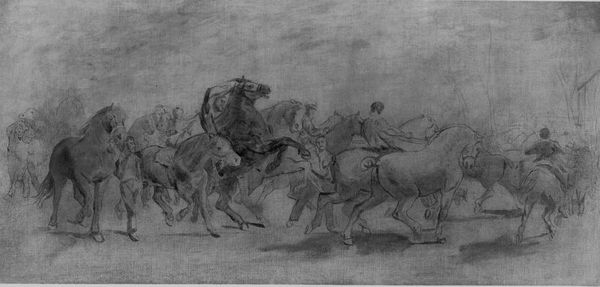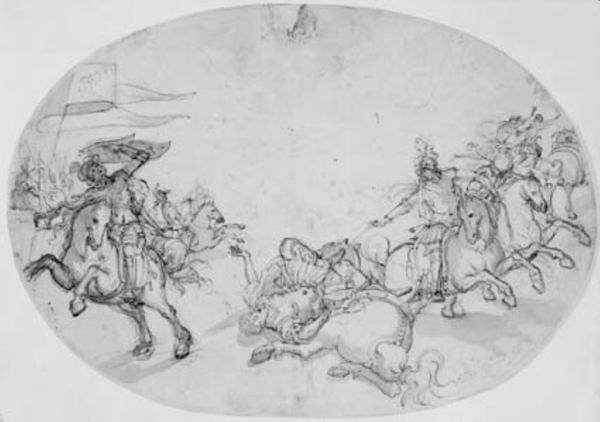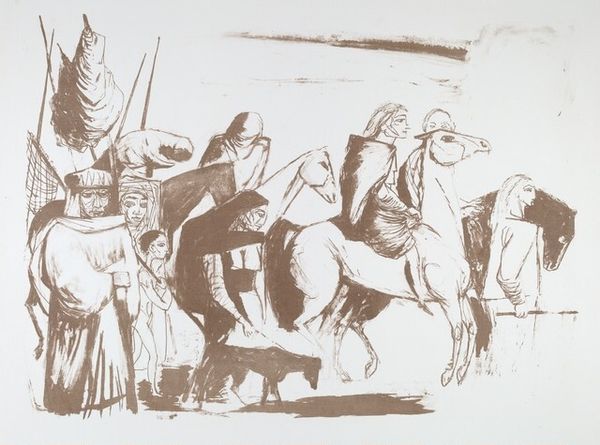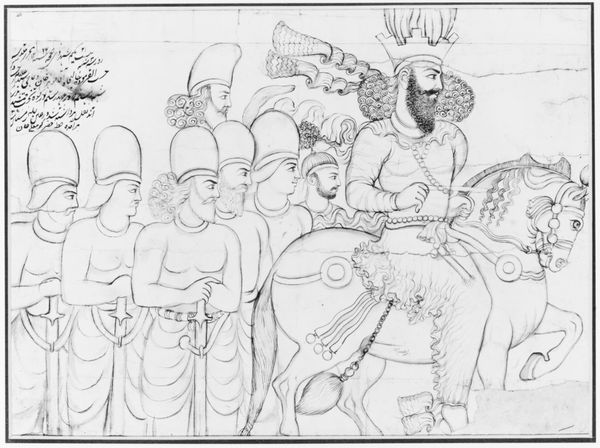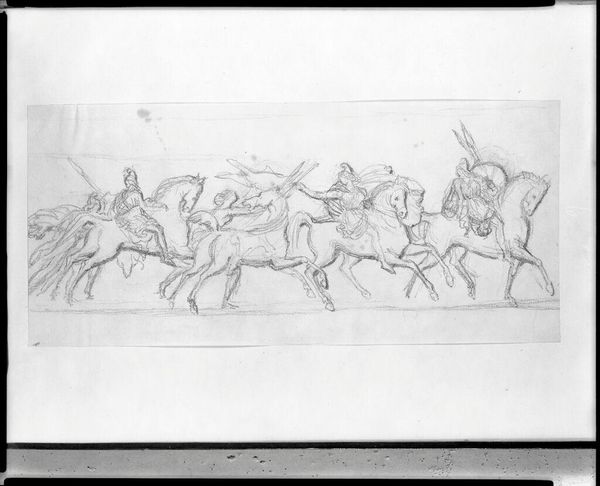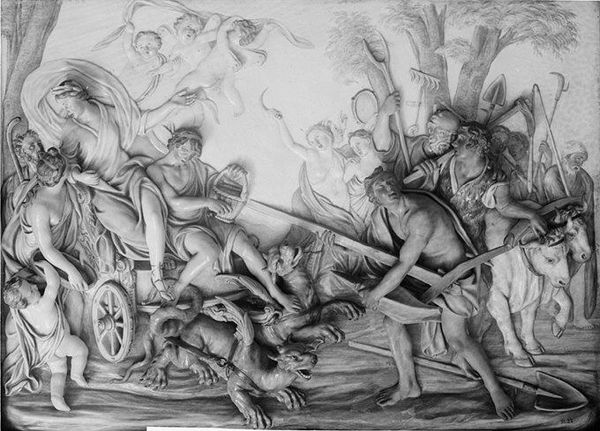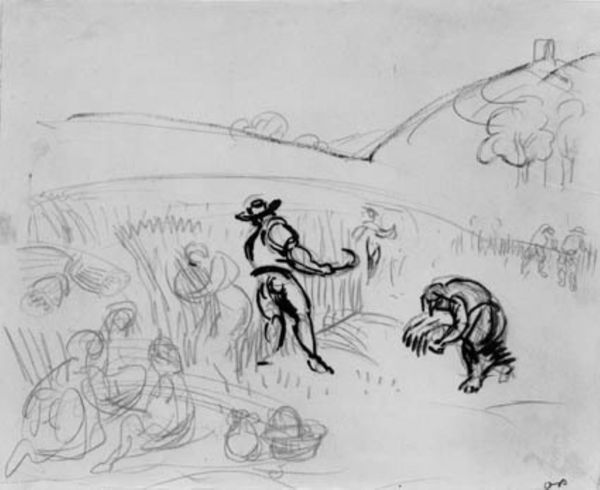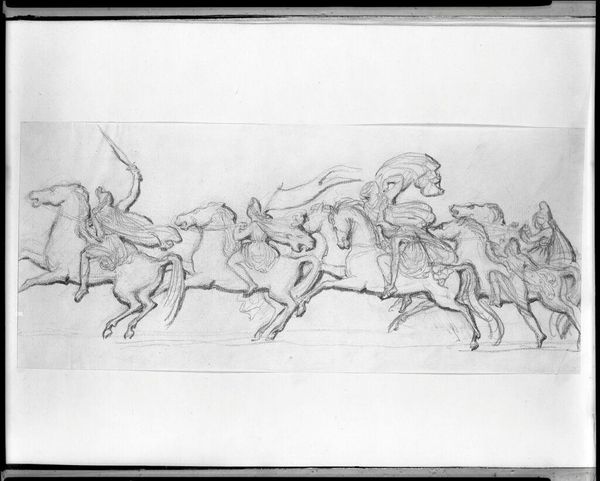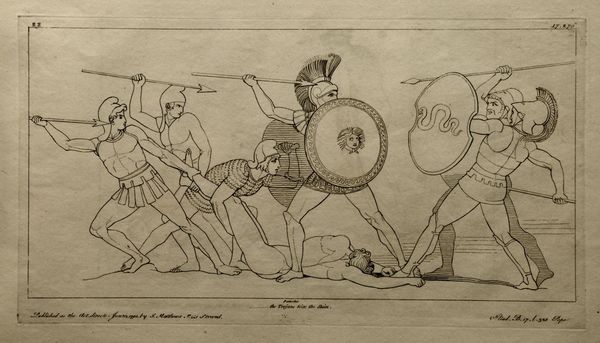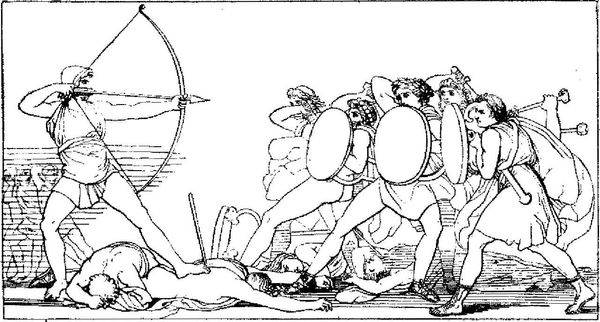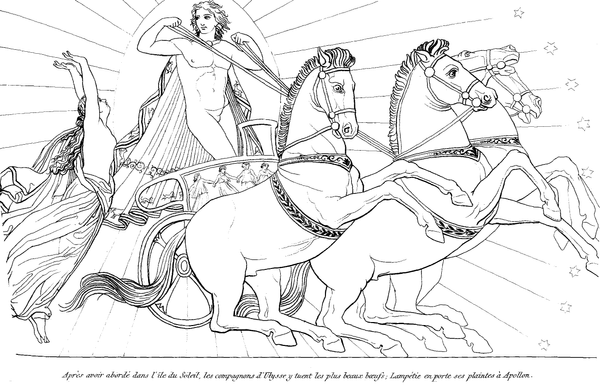
Drawing of Sasanian rock relief: Shapur I (r. A.D. 241-272) and Roman emperor Valerian at Naqsh-i Rustam, southern Iran 1812
0:00
0:00
drawing, paper, ink, pen
#
portrait
#
drawing
#
pen illustration
#
paper
#
ink
#
ancient-mediterranean
#
horse
#
abstraction
#
men
#
pen
#
islamic-art
#
history-painting
#
sword
Dimensions: 8 1/8 × 12 9/16 in. (20.6 × 31.9 cm)
Copyright: Public Domain
Curator: This ink drawing on paper from 1812 is a reproduction by Lutf-'Ali Shirazi of a Sasanian rock relief. The original relief depicts Shapur I and the Roman Emperor Valerian at Naqsh-i Rustam, in southern Iran. Editor: It's stark, isn't it? Even as a drawing, the power dynamic leaps out. The figure on horseback clearly dominates the composition. Curator: Absolutely. Let’s consider the materials involved. The use of pen and ink on paper reduces the monumentality of the original stone carving to something portable, accessible. Who was Shirazi making this for, and how might they have consumed it? Was it an aide memoire for an antiquarian or a statement of cultural memory for an Iranian patron? Editor: The very act of reproducing it in 1812 speaks to the continued relevance of that ancient power dynamic between the Sasanian and Roman empires. Look at how Valerian is being held, almost as a supplicant, while Shapur I sits triumphantly on his horse. This image speaks volumes about the historical construction of power, particularly East versus West. The gaze of dominance, if you will. Curator: The draftsmanship itself also warrants attention. Shirazi’s linework, his attention to detail, suggests considerable skill and a deep understanding of the original carvings. Consider the labor that went into recreating such an image. The craft production involved highlights an almost scholarly appreciation of ancient workmanship. Editor: True. And it invites questions. How does this drawing operate within broader visual traditions in Iran at the time? Was it purely documentary, or did it serve some other socio-political function within the Qajar court, for example? Was this meant to inspire the leaders of the Qajar dynasty through reference to the glories of its pre-Islamic past? Curator: Those are essential considerations, understanding both the historical and artistic context gives greater meaning to both the piece itself as an artistic piece and as a source. Thanks for broadening that thought with me! Editor: The pleasure was all mine. And I hope this gives our listeners a deeper look into power structures old and new.
Comments
No comments
Be the first to comment and join the conversation on the ultimate creative platform.
